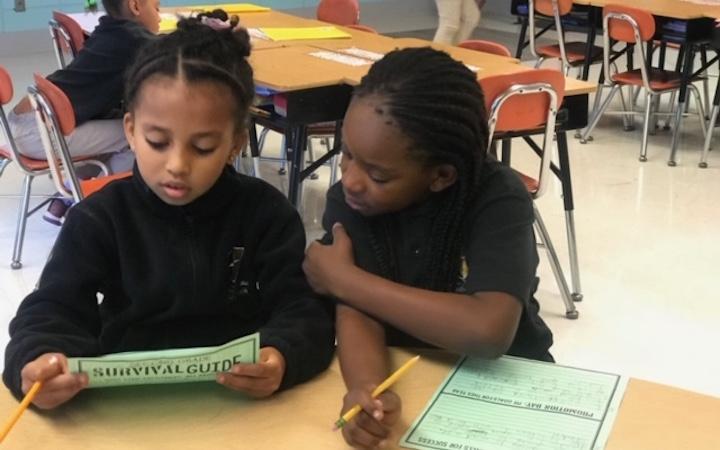It is hard to believe that the lazy days of summer are coming to an end. School supplies and backpacks have replaced summer toys, and teachers are planning schedules, procedures, and classrooms for the upcoming year. If you are implementing blended learning in your school this year, here are some quick tips to start your year off as a PRO!
Procedures and Expectations
The success of any program largely depends on the expectations and procedures established in the beginning. Do not become so excited about the technology and software programs that you rush through procedures! Remember the old saying, "Practice makes permanent?" This is so true when setting up your classroom for success.
Spend your first two weeks building classroom community and setting procedures for the year. Many teachers can attest that classroom management is a crucial component to blended-learning success. Taking time to get to know your students — their interests, backgrounds, learning styles, etc — is essential throughout the year, but especially in the first few weeks of school.
It is also essential to introduce and practice procedures slowly. For example, students should practice transitioning from one station to the next until every student has mastered it. Software programs should not be used for the first couple of weeks until procedures are in place, and students can transition seamlessly without any corrections or reminders from you.
Readiness
Blended learning has the power to transform schools when it is implemented effectively and accompanied by staff buy-in. When thinking about school readiness, consider:
-
- staff capacity and knowledge
- school-wide expectations
- coaching
First, ask yourself, "Do all teachers understand blended learning, and are they ready to implement best practices in their classrooms?" Ensure all teachers are on board and understand WHY your school is choosing to use blended learning. Assure all teachers about WHAT blended-learning readiness means for them and their instructional practices.
Secondly, because a significant component of blended learning relies on effectively analyzing data, teachers must feel comfortable with data. If data analysis is not a strong point in your building, consider devoting a beginning-of-year professional development session to it.
Think about your school-wide expectations for blended learning.
-
- Are you are expecting to see specific instructional practices in classrooms?
- Do teachers have a mechanism to track student growth?
- What do transitions look like?
- What gains do you hope to see throughout the year?
These are all questions to consider and present to staff.
Onboarding
 Finally, consider the onboarding process. Troubleshoot potential issues that could arise and make plans to ensure a smooth transition to blended learning. Is your school internet ready? Does your school have the proper bandwidth in place and, if so, how is the wifi? Make sure the hardware and infrastructure are in place and ready to go.
Finally, consider the onboarding process. Troubleshoot potential issues that could arise and make plans to ensure a smooth transition to blended learning. Is your school internet ready? Does your school have the proper bandwidth in place and, if so, how is the wifi? Make sure the hardware and infrastructure are in place and ready to go.
If your school is purchasing software programs, teachers must know how to use the programs and how to use data reports in their instruction. Some offer virtual professional developments and webinars for teachers during the onboarding process. Ensure your teachers attend these sessions and are confident using the programs.
Check your classrooms. Are teachers ready to incorporate models that best support blended learning? Consider allowing flexible seating, arranging the room to integrate station rotation or flex models, and posting anchor charts and visuals to help students master procedures and expectations.
There are so many great ways to prepare for the start of the school year. These tips will help you think like a blended-learning PRO. What are some tips you have for starting the year off right? Let us know and post below!
 Alliance for Catholic Education
Alliance for Catholic Education
